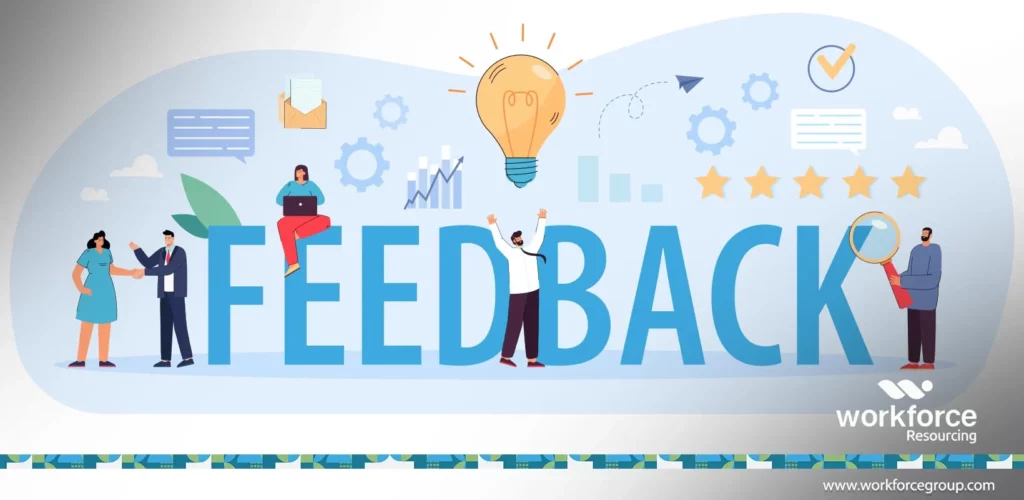Defining a talent is a crucial aspect of building a successful organisation. Talent evaluation helps ensure that you hire the right people for the right roles and create a capable, effective workforce aligned with your organisation’s goals and needs.
However, defining and identifying a talent can be a complex process, and there are many factors to consider before you begin.
In this context, this article aims to provide an overview of key factors to consider before hiring your next talent. By keeping these factors in mind, you can ensure that your talent definition and evaluation process is effective, efficient, and aligned with your organisation’s needs.
Who Is a Talent?
Skills, high performance, ability, capability, knowledge, high performance: these are all attributes that define who a talent is.
A talent is a person who has the aptitude or skill to do something well. In the business context, a talent would be an employee who possesses the potential to drive organisational growth.
An apt definition of talent emphasises its dynamic nature as the qualities that make a person suitable to perform a specific job role excellently. These qualities can be summarised in two words—ability and capability.
Talent is the ability and capability to do something well. Ability refers to current performance while capability implies potential performance. Both can be observed, tested and measured.
The concept of observing and measuring is essential to any discussion around talent as it is impossible to recognise what has not been observed or measured, let alone evaluate it.
Key Steps in Talent Definition & Evaluation

Some of the questions that organisations need to answer include: What is talent in the workplace? What is talent definition in HR?
The following steps will help you arrive at the answer to what the definition of talent is in the workplace and how to evaluate them. They are:
1. Define Your Goals and Objectives
Determining your goals is a critical first step in defining an effective talent. When you have a clear understanding of what you want to achieve, you can design an evaluation process that is tailored to those goals.
For example, if your goal is to improve retention rates, you might focus on evaluating candidates’ fit with your organisation’s culture and values, as well as their potential for growth and development. On the other hand, if your goal is to fill skills gaps within the organisation, you might focus on evaluating technical skills and experience.
It’s important to be specific when defining your goals. This means setting clear, measurable objectives that can be used to track your progress and evaluate the success of your strategy. You might set targets for things like employee retention rates, time-to-hire, or the percentage of hires who meet or exceed performance expectations.
When defining your goals, it’s also important to consider the broader context in which your organisation operates. For example, you might need to consider industry trends, market conditions, or regulatory requirements that could impact your talent.
2. Identify Key Competencies
Key competencies are the skills, knowledge, abilities, and other characteristics that are required for success in a particular role or within a specific organisation. By identifying the key competencies for the roles you are evaluating, you can ensure that you are evaluating candidates on the criteria that are most relevant to their success in the role.
To identify key competencies, you can start by reviewing the job description and talking to subject matter experts within your organisation. You might also conduct a job analysis to identify the specific tasks and responsibilities associated with the role, as well as the skills and knowledge required to perform those tasks effectively.
It’s important to note that the key competencies for a particular role can vary depending on the organisation and the context in which the role is performed. For example, the key competencies for a sales role in a healthcare organisation might be different from the key competencies for a sales role in a technology company.
By taking the time to identify key competencies and align your evaluation methods with those competencies, you can ensure that you are effectively evaluating candidates on the criteria that are most relevant to their success in the role. This can help you to make more informed hiring decisions and build a more capable and effective workforce.
Once you have identified the key competencies for the role, you can develop assessment criteria and evaluation methods that are aligned with those competencies. For example, if communication skills are a key competency, you might design an interview or assessment exercise that evaluates candidates’ ability to communicate effectively.
3. Choose the Right Assessment Tools
Choosing the right assessment tools is another critical step in defining and identifying a talent in the workplace. There are a wide range of assessment tools available, including cognitive ability tests, personality inventories, situational judgment tests, and more. The specific tools you select should be aligned with the project objectives and the skills and competencies you are seeking to assess.
To choose the right assessment tools, it’s important to first identify the specific skills or competencies you are looking to assess. For example, you may want to assess problem-solving skills, communication skills, or leadership potential. Once you’ve identified the skills and competencies, you can then select the appropriate assessment tools to evaluate them.
Before selecting any assessment tool, it’s important to ensure that the tool is valid, reliable, and free of potential biases.
In addition to selecting the appropriate assessment tools, it’s important to ensure that the tools are properly administered and scored. This may require specialized training or certification, depending on the specific tools being used. By ensuring that the assessment tools are properly administered and scored, you can help ensure that the assessment results are accurate and effective at identifying top talent.
4. Communicate With Stakeholders
Developing a communication plan is a key step in any talent evaluation project. This involves creating a plan to inform employees about the assessment project, how the assessment will be conducted, and what the assessment results will be used for. By communicating effectively with employees, you can help ensure that they understand the purpose of the assessment and are more likely to participate fully.
When developing a communication plan, it’s important to consider the specific information that needs to be communicated. This may include details about the assessment process, such as the types of assessment tools that will be used and how they will be administered. It may also include information about the assessment results, such as how they will be used for career development or succession planning.
It’s also important to address any potential concerns or questions that employees may have about the assessment. For example, employees may be concerned about the confidentiality of their assessment results or the potential impact of the assessment on their careers. By addressing these concerns up front and providing clear and transparent information, you can help alleviate employee concerns and ensure a smoother assessment process.
5. Train Your Evaluators
Evaluators, or assessors, are the individuals who administer and score the assessments, and their training can greatly impact the accuracy and reliability of the assessment results.
To ensure that your evaluators are properly trained, you should consider the following:
- Selecting evaluators with the necessary skills and experience: Evaluators should have a solid understanding of the job requirements and the skills and competencies that are being evaluated. They should also be trained on how to administer and score the assessments.
- Providing evaluators with clear instructions: Evaluators should be provided with clear instructions on how to administer and score the assessments, including how to rate responses, how to provide feedback, and how to communicate the results to employees.
- Offering training on the assessment tools: Evaluators should receive training on the specific assessment tools that will be used, including how to interpret the results and how to provide feedback to employees.
6. Establish a Feedback Mechanism and Continuously Monitor and Improve the Strategy

Establishing a feedback mechanism is an essential step that HR leaders should take before beginning any talent assessment project. Feedback is a critical component of the assessment process, as it provides employees with valuable insights into their strengths and areas for improvement. A well-designed feedback mechanism can also help employees understand how their skills and competencies align with the organisation’s goals and objectives, and can help identify opportunities for career development.
Create a supportive environment for feedback: To encourage employees to participate in the assessment process and be open to feedback, HR leaders should create a supportive environment that emphasizes the importance of growth and development.
Talent evaluation is an ongoing process, and it is important to continuously monitor and evaluate the effectiveness of your strategy. This can help you identify areas for improvement and adjust your strategy as needed.
7. Consider Outsourcing to a Reputable Talent Evaluation Tools Provider
Defining and hiring a talent in the workplace is no easy feat. And because of its importance to organisations having the right people working for them, it must be well-planned. That is why it is advised that if you don’t have the capacity to execute this, you are better of outsourcing this project to a reputable talent assessment company.
You may choose to outsource the whole project, or just a part of the project, such as the identifying of key competencies to assess or the development of assessment tools, or the training of evaluators.
However, before doing that, you must verify their track record, resources, technical capabilities and the calibre of clients they have worked with in the past. We will elaborate extensively on this in our next article.
Taking the 7 steps listed above will not only help you appropriately answer the ‘who is a talent’ question, it will also ensure you have the right fits working for you.
With our 18+ years executing talent assessment projects for clients we understand that that a lot of effort goes into planning and executing an assessment project.
Do you need help doing yours? Then speak to us here – https://workforcegroup.com/become-a-client/

Akindele Afolabi
Director, Workforce Resourcing



